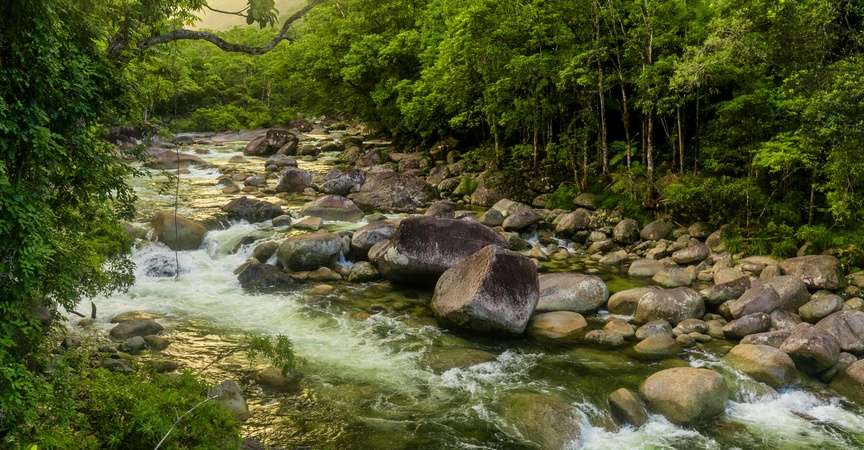Itinerary
Our local representative meets you at the airport and transfers you to your hotel for three nights' accommodation on a bed-and-breakfast basis. The Victoria and Alfred is located on the V&A Waterfront, close to the Two Oceans Aquarium, the Zeitz Museum of Contemporary Art Africa, Watershed design and craft market, and distinctive shops and restaurants—and just a short taxi ride to the center of downtown Cape Town.
Day 2: Cape Peninsula / Cape Point / Kirstenbosch Botanical Gardens
After breakfast overlooking the harbor, join our local guide this morning to head south from Cape Town along the Atlantic seaboard. This magnificent coastline is characterized by rocky indentations, long stretches of broad beach, and picturesque bays. The morning light illuminates the seascape along Chapman’s Peak Drive, hugging the cliffs more than 2,000 feet above Hout Bay. Celebrated as one of the most scenic coastal roads in the world, our route offers ever more stunning views, unveiling panoramas of Long Beach and the Noordhoek Valley, with glimpses of little seaside hamlets. From June to November there's a chance to see southern right whales just offshore, which migrate here seasonally to mate and calve.
At famous Boulders Beach, stop to see whimsical African penguins, the only penguin species found on the continent. A network of boardwalks offers close-up views of the colony of some 3,000 birds. Continue to Cape Point Nature Reserve on the Cape of Good Hope, known for its diversity of flora—about 1,200 different plant species—and wildlife, including healthy populations of Cape mountain zebra, bontebok, springbok (South Africa's national emblem), Cape grysbok, gray rhebok, red hartebeest, eland duiker, Cape fox, caracal, and chacma baboon. These baboons' unusual diet consists largely of marine foods, which they gather at low tide. More than 160 bird species have also been recorded in the reserve. We’re joined on a coastal wildlife walk by a local otter expert to learn about the adorable though elusive Cape clawless otter.
The wind-battered promontory of Cape Point offers a sweeping vantage over the ocean and surrounding cliffs. Get your exercise by climbing the steps to the top, or take the funicular or shuttle bus to reach the summit. After a scenic lunch, descend to Kirstenbosch National Botanical Gardens, one of the premier botanic gardens in the world. Half of South Africa's 18,000 indigenous flowering plant species are cultivated here, attracting myriad birdlife including the Cape sugarbird, malachite, lesser double-collared and orange-breasted sunbirds, Cape bulbul, Cape francolin, Klaas’s cuckoo and Cape batis. Return to the V&A Hotel this evening in time for dinner on your own, to enjoy one of the many excellent restaurants within easy walking distance.
Day 3: Table Mountain / Cape Winelands
This morning, ride the aerial cableway to the top of Table Mountain for dramatic 360-degree views of Cape Town, Table Bay and the coast from nearly 3,600 feet. Table Mountain National Park is part of the Cape Floral Region World Heritage Site, the single richest floristic area in the world, with more than 20% of all African flora. South Africa's Western Cape is more botanically diverse than the Amazon rain forest! Three walking trails at the top offer access for exploration, with more than 1,460 different plant species on view. Many are rare and endangered fynbos varieties, and 68% are endemics. King protea are a special highlight. We're sure to see lots of rock hyraxes (also known as dassies), and look also for raptors, songbirds and lizards including the southern rock agama, black-girdled lizard and Cape skink.
No trip to the Western Cape is complete without a visit to South Africa's renowned wine country. Traverse verdant valleys and farmlands backdropped by views of the Hottentots Holland and Simonsberg mountains before arriving to the Babylonstoren estate for a garden tour, wine tasting and lunch. Dating to 1692, Babylonstoren is one of the oldest Cape Dutch farms in the region. Many of the current buildings date to the mid-18th century, including the former cow shed transformed into the current-day Babel restaurant, where we'll enjoy a colorful and creative "farm-to-fork" lunch featuring fresh products from Babylonstoren's dairy, bakery, vineyard and 8-acre garden, growing more than 300 different edible and medicinal plants.
After lunch, continue to Stellenbosch, the second-oldest European settlement in South Africa after Cape Town. This lively university community, surrounded by the mountain nature reserves of Jonkershoek and Simonsberg, is known for the impressive oak trees that shade its streets. Oaks were planted originally by the town's founder, Simon van der Stel, the first governor of the Cape Colony established in 1652 by the Dutch East India Company. Enjoy the drive along Dorp Street with its beautiful display of traditional Cape Dutch houses, then browse the boutiques and galleries in town. The Stellenbosch Wine Region is South Africa's most famous and the country's leading location for viticulture research. This afternoon, savor a wine and chocolate tasting at the scenic Waterford Estate. Just half of the 300-acre estate is cultivated, with the remainder preserved for the natural flora and fauna. In addition to the vineyards, we'll enjoy the aroma of fragrant citrus groves, lavender and rosemary beds. Return to Cape Town for a final night, with dinner on your own.
Day 4: Cape Town / Depart
Transfer to the airport today for homeward flights.
Please Note: The order of activities may vary based on season and weather. If you prefer to organize a private custom trip to the Cape Town region, please click here.























